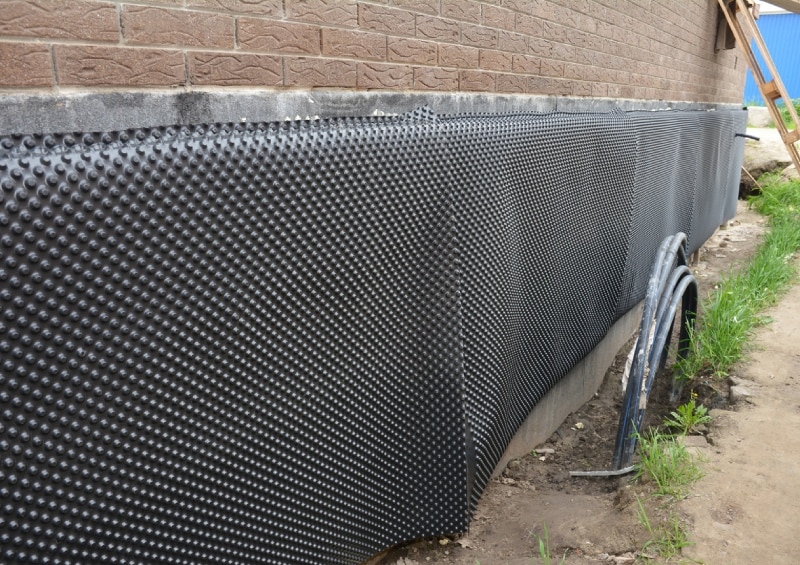Basement and foundation waterproofing in the Bay Area have evolved significantly over the years, playing a crucial role in protecting buildings from moisture damage and ensuring structural integrity. However, in the Bay Area and other regions with specific geological and environmental factors, many homes lack sufficient waterproofing measures, leading to potential issues. Let’s delve into the history of foundation and basement waterproofing and explore why this is a common concern in the Bay Area.
Historical Evolution of Waterproofing
The concept of waterproofing dates back centuries, with ancient civilizations using natural materials like clay, lime, and bitumen to protect their structures from water intrusion. Over time, as construction techniques advanced, waterproofing methods became more sophisticated. In the 19th and 20th centuries, the development of modern materials such as asphalt, rubberized coatings, and synthetic membranes revolutionized waterproofing practices.
Modern Interior and Exterior Foundation Waterproofing Techniques
Today, foundation and basement waterproofing in the Bay Area involves a range of techniques and materials designed to create a barrier against water penetration. These may include:
- Exterior Waterproofing: This method involves applying waterproof coatings or membranes to the exterior walls and foundations of buildings, preventing water from seeping into the structure.
- Interior Waterproofing: Interior waterproofing techniques focus on creating a moisture barrier within basements or crawl spaces using coatings, sealants, and drainage systems.
- French Drains: French drains are designed to redirect water away from foundations by channeling it through perforated pipes and into a drainage system.
- Sump Pump Installation: Sump pumps are installed in basements or crawl spaces to remove excess water and prevent flooding.
- Crawl Space Encapsulation: Encapsulation involves sealing off crawl spaces with vapor barriers and insulation to prevent moisture intrusion.
Challenges in Foundation Waterproofing in the Bay Area
Despite the advancements in waterproofing technology, many homes in the Bay Area face challenges when it comes to adequate waterproofing in San Francisco of foundations and basements. Several factors contribute to this issue:
- Geological Conditions: The Bay Area is known for its diverse geological conditions, including expansive clay soils, high groundwater levels, and seismic activity. These factors can put additional stress on building foundations and increase the risk of water infiltration.
- Historical Construction Practices: Older homes in the Bay Area may not have been built with modern waterproofing standards in mind. Insufficient drainage systems, lack of moisture barriers, and aging materials can contribute to water-related problems.
- Urban Development: Rapid urbanization and changes in land use can impact natural drainage patterns, leading to water accumulation around buildings.
- Climate Variability: The Bay Area’s climate, characterized by wet winters and dry summers, can result in fluctuating moisture levels that challenge waterproofing systems.
Importance of Waterproofing
Proper foundation and basement waterproofing are essential for preserving the structural integrity of buildings and preventing costly water damage. Without adequate waterproofing measures, homes in the Bay Area are susceptible to issues such as:
- Foundation Cracks: Water infiltration can lead to foundation cracks and settlement, compromising the stability of the structure.
- Mold and Mildew Growth: Excess moisture in basements or crawl spaces creates an ideal environment for mold and mildew, which can affect indoor air quality and pose health risks.
- Basement Flooding: Poor waterproofing increases the risk of basement flooding during heavy rains or groundwater intrusion events.
- Structural Damage: Water-related damage can weaken building materials, leading to structural decay and costly repairs.
Conclusion
The history of foundation and basement waterproofing reflects a continuous effort to protect buildings from water damage and maintain structural integrity. In the Bay Area, where geological, environmental, and historical factors pose unique challenges, ensuring sufficient waterproofing measures is crucial for homeowners and builders alike. By investing in modern waterproofing techniques tailored to the region’s specific needs, homeowners can safeguard their properties and enjoy a durable, moisture-resistant foundation for years to come.


